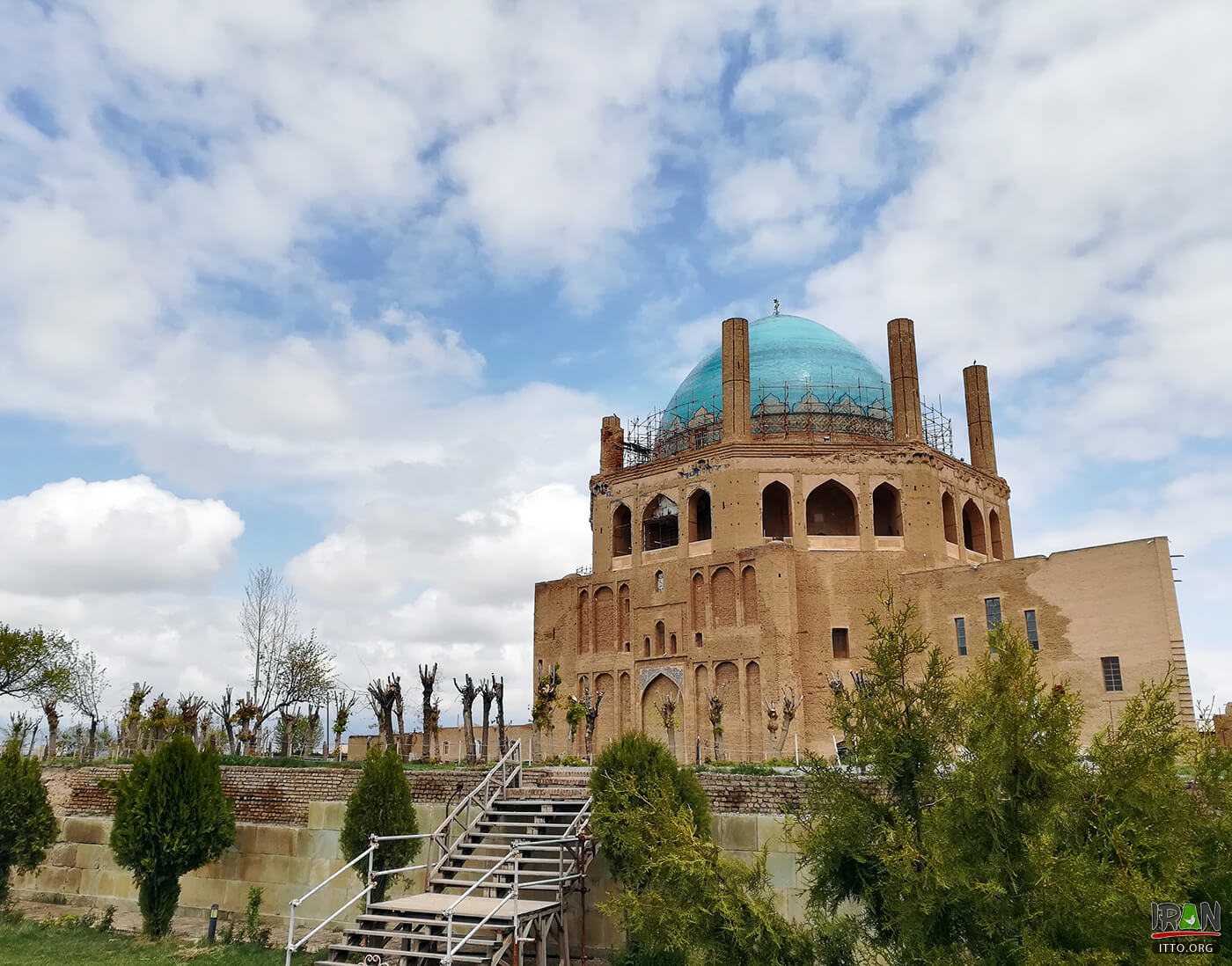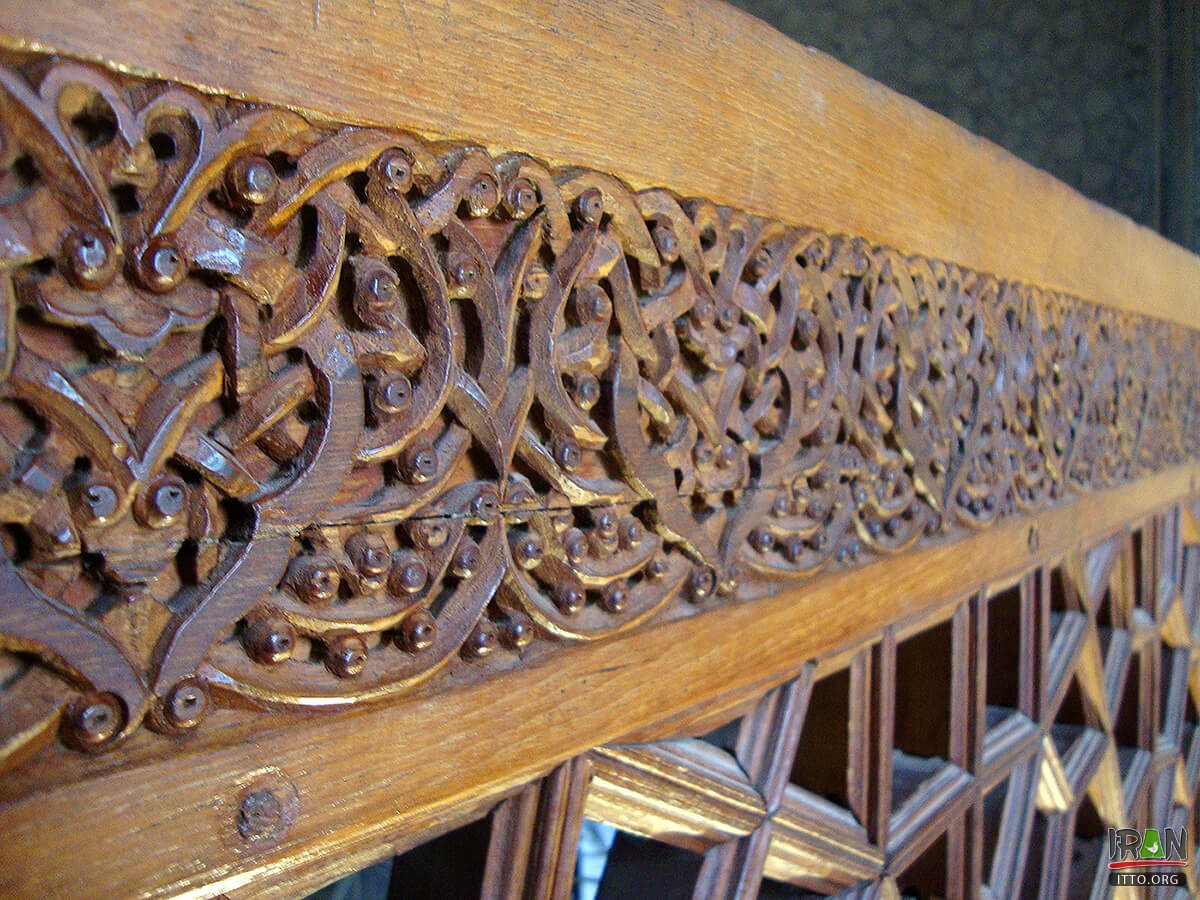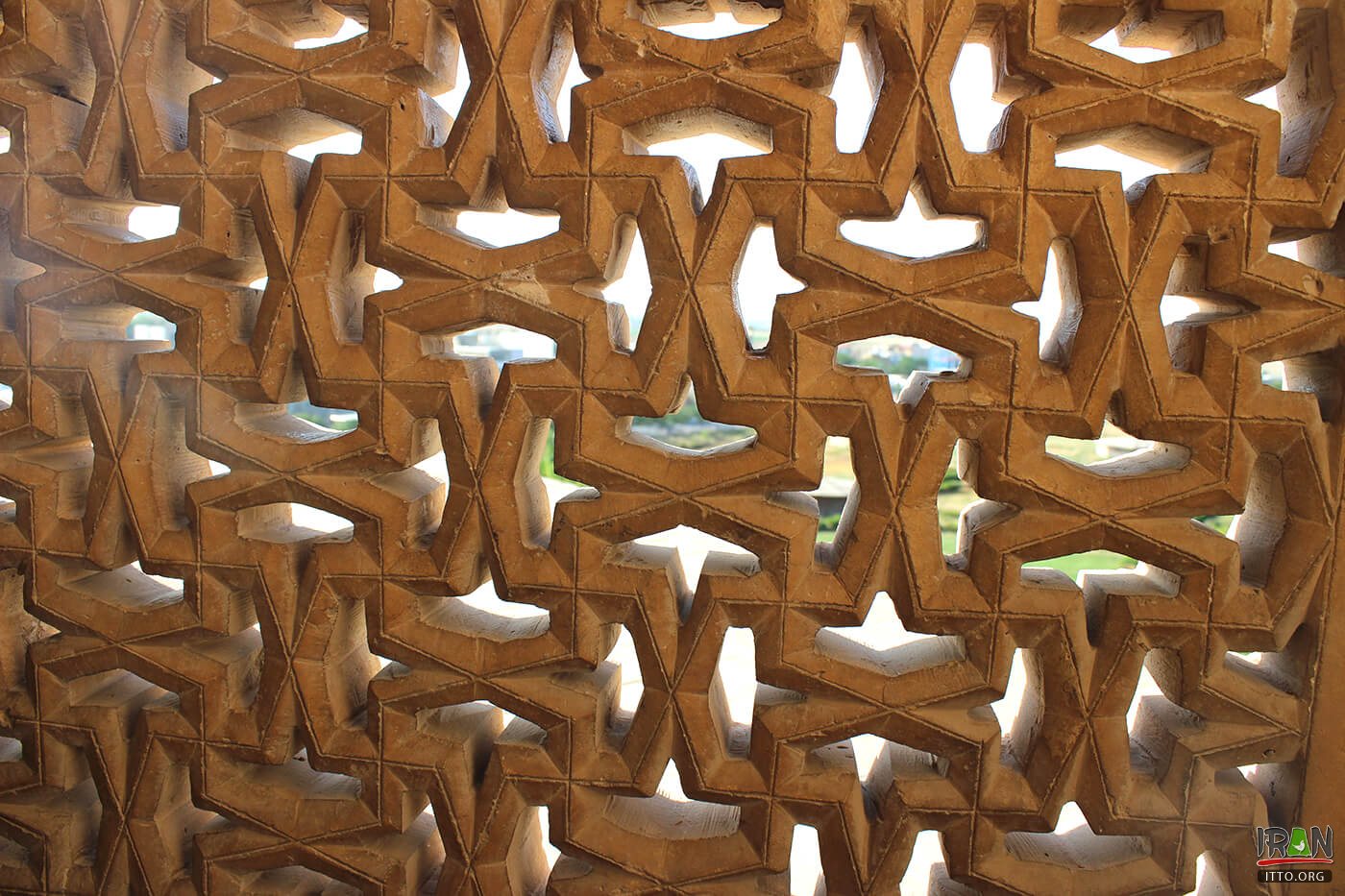Soltaniyeh Zanjan: Iran's Architectural Masterpiece & UNESCO Gem
Iran, a land often shrouded in mystery for many, holds within its ancient borders a tapestry of archaeological wonders, each bearing a rich history and profound cultural significance. These sites, far from being mere ruins, are vibrant testaments to millennia of human ingenuity and artistic expression, capable of bewildering and inspiring any visitor who ventures to explore them. Among these countless treasures, one stands out with particular grandeur and historical weight: the magnificent Soltaniyeh Dome in Zanjan province.
Nestled in the scenic Zanjan province in the northwest of Tehran, the Soltaniyeh Dome, also known as the Mausoleum of Oljaytu, is not just another ancient monument; it is a breathtaking architectural marvel that has profoundly influenced the course of global design. Registered as a UNESCO World Heritage Site in 2005, this remarkable structure is famed for its enormous dome, innovative design, and intricate tile work, holding a special, irreplaceable place in the history and heritage of Iran.
Table of Contents
- The Enduring Legacy of Soltaniyeh Zanjan: A Historical Overview
- Architectural Grandeur: The Soltaniyeh Dome's Unrivaled Scale
- A Global Influence: Soltaniyeh's Impact on World Architecture
- Soltaniyeh's UNESCO World Heritage Status: A Testament to Its Value
- Planning Your Visit to Soltaniyeh Zanjan
- Beyond the Dome: Exploring Zanjan Province
- Preserving a Masterpiece: The Future of Soltaniyeh
- Conclusion
The Enduring Legacy of Soltaniyeh Zanjan: A Historical Overview
To truly appreciate the Soltaniyeh Dome, one must delve into the rich historical context from which it emerged. The city of Soltaniyeh itself, where this architectural wonder stands, was once the vibrant capital of the Ilkhanid Dynasty, a Mongol offshoot that ruled Persia from the 13th to the 14th century. This period was marked by significant cultural and artistic flourishing, blending Persian traditions with Central Asian influences.
Birth of an Ilkhanid Capital: Soltaniyeh City
The vision for this grand monument and its surrounding complex originated with Sultan Mohammad Khodabandeh, also known as Oljaytu, the eighth ruler of the Ilkhanid dynasty. It was under his patronage that the Soltaniyeh complex, including the monumental dome, was meticulously constructed between 1302 and 1312 AD. This decade-long endeavor transformed Soltaniyeh into a bustling center of power, trade, and culture, reflecting the ambition and sophisticated tastes of the Ilkhanid rulers. The city, though now largely in ruins around its central masterpiece, was once a thriving metropolis, a testament to a powerful empire's reach and its commitment to monumental architecture.
The Mausoleum of Oljaytu: A Monumental Undertaking
At its core, the Soltaniyeh Dome serves as the mausoleum of Oljaytu, designed to be his final resting place. This primary function imbues the structure with a profound sense of purpose and solemnity. Throughout history, and even today, it has been known by various names, each highlighting a different facet of its identity: "The Dome of Soltaniyeh," "Mausoleum of Oljaytu," "Tomb of Uljaytu," or simply the "Soltaniya complex." These designations underscore its multifaceted role as a historical mausoleum and a broader monument complex. The sheer scale and intricate details of the dome suggest that Oljaytu intended it not merely as a tomb, but as an enduring symbol of his reign and the power of the Ilkhanid dynasty, a beacon of architectural prowess that would stand for centuries.
Architectural Grandeur: The Soltaniyeh Dome's Unrivaled Scale
What truly distinguishes the Soltaniyeh Mausoleum, affectionately known as the Soltaniyeh Dome by many, is the substantial success achieved by Iranian architects of that era. This structure is not merely large; it represents a pinnacle of architectural innovation and engineering prowess that was far ahead of its time. Its design elements and construction techniques set new benchmarks, influencing subsequent generations of builders and designers across continents.
- Actor Leo Rossi
- Iran Imam Khomeini Airport
- America Iran Relations
- Richest People In Iran
- American Hostages In Iran In 1979
A World Record Holder: The Third Tallest Brick Dome
The Soltaniyeh Dome holds an impressive distinction in global architecture: it is recognized as the third tallest brick dome in the world. This places it in an elite category, standing proudly after the iconic Church of Santa Maria del Fiore in Florence and the majestic Hagia Sophia in Istanbul. While some sources refer to it as the largest brick dome in the world, its widely acknowledged position as the third tallest underscores its monumental scale and the incredible engineering feat involved in its construction. Its sheer size is breathtaking, a testament to the ambition of its patron and the skill of its builders. The dome's massive double shell, a revolutionary concept for its time, allowed for its impressive height and structural integrity, contributing to its enduring presence for over seven centuries.
Ilkhanid Innovation: Design and Construction
The Dome of Soltaniyeh, built between 1302 and 1312 AD, is a stunning example of Ilkhanid architecture, showcasing a remarkable blend of innovative design and intricate craftsmanship. The structure boasts eight elevated porticos, each contributing to its imposing facade, and approximately 50 chambers, indicating a complex internal layout that served various purposes beyond just a mausoleum. The brilliance of the Iranian architects of that period is evident in every detail, from the sophisticated structural engineering that allowed for such a massive brick dome to the delicate and elaborate tile work that once adorned its exterior and interior. These tiles, vibrant in their colors and intricate in their patterns, were not merely decorative but also served to highlight the architectural forms and convey symbolic meanings. The use of double-shelled domes, a technique that provided both structural stability and thermal insulation, was a pioneering achievement that would later be adopted and refined in other grand constructions across the world.
A Global Influence: Soltaniyeh's Impact on World Architecture
The architectural significance of the Soltaniyeh Dome extends far beyond the borders of Iran. Its innovative design and construction techniques had a profound and demonstrable influence on subsequent monumental structures, particularly in the realm of dome building. Recognized globally for its pioneering spirit, the Soltaniyeh Dome served as a blueprint and an inspiration for architects and builders across different cultures and continents. One of the most compelling aspects of its legacy is its documented influence on iconic monuments such as Florence's Cathedral (Duomo di Firenze) and Istanbul's Hagia Sophia. While these later structures evolved their own distinct styles, the foundational principles and advanced engineering demonstrated at Soltaniyeh provided crucial insights into constructing vast, self-supporting domes. This cross-cultural transmission of architectural knowledge highlights Soltaniyeh's role as a crucible of innovation, a place where architectural boundaries were pushed and new possibilities for monumental construction were realized. Its very existence stands as a testament to the interconnectedness of architectural development across the medieval world, proving that artistic and engineering breakthroughs in one region could reverberate globally, shaping the skylines of distant cities for centuries to come.
Soltaniyeh's UNESCO World Heritage Status: A Testament to Its Value
In recognition of its unparalleled historical, architectural, and cultural significance, the Soltaniyeh Dome was officially registered as a UNESCO World Heritage Site in 2005. This prestigious designation is not merely an honorary title; it signifies that the site possesses "outstanding universal value" and warrants protection for the benefit of all humanity. UNESCO status brings with it a commitment to preservation and a global spotlight, ensuring that future generations can continue to appreciate and study this remarkable monument. The decision to include Soltaniyeh among the world's most cherished heritage sites underscores its innovative design, intricate tile work, and its pivotal role in the evolution of architecture. It also acknowledges the integrity and authenticity of the structure, which has largely retained its original form and materials despite the passage of centuries. The principal management authority responsible for the property is the Iranian Cultural Heritage, Handicraft and Tourism Organization (ICHHTO), which is administered and funded by the government of Iran. Through its local office in Zanjan, ICHHTO oversees the conservation, management, and promotion of the Soltaniyeh Dome, ensuring its long-term preservation. This involves careful monitoring, restoration projects, and managing visitor access, all while navigating the complexities of a buffer zone, parts of which are in private ownership, to protect the site's immediate surroundings and visual integrity. The UNESCO listing is a powerful affirmation of Soltaniyeh's enduring legacy and its place as a global cultural treasure.
Planning Your Visit to Soltaniyeh Zanjan
For those eager to witness this architectural marvel firsthand, planning your trip to Soltaniyeh Zanjan is relatively straightforward. The site is well-managed and accessible, offering a rewarding experience for history enthusiasts, architecture buffs, and general travelers alike. Understanding its location and how to get there, along with key visitor information, will ensure a smooth and enjoyable visit to this extraordinary monument.
Location and Accessibility: Getting There
The Soltaniyeh Dome is strategically situated in Soltaniyeh city, within the Zanjan province of Iran. For travelers originating from the capital, Tehran, Soltaniyeh is roughly a 240 km drive, making it a feasible destination for those exploring Iran's northwest. If you're already in Zanjan city, which serves as the capital of Zanjan province, the dome makes for a fantastic day trip. It's conveniently located about 40 km from the city center, an easy distance to cover. A quick guide on how to get to Soltaniyeh from Zanjan city involves utilizing public transport or shared taxis, which are readily available and provide a cost-effective way to reach the site. The trip is generally smooth and uncomplicated if you know the local transport options. Zanjan province itself is quite significant, ranking as the 20th largest province of Iran with an area of 21,773 square kilometers. Its geographical location is also noteworthy, bordering several other culturally rich provinces including West Azerbaijan, East Azerbaijan, Ardabil, Gilan, Qazvin, Hamedan, and Kurdistan. Zanjan city, the provincial capital, is one of the largest cities in northwest Iran, with a population of 416,851 people as of 1389 SH (Iranian calendar), making it the 19th most populous city in the country. This regional context highlights Zanjan as a significant hub from which to explore the broader historical and natural wonders of northwestern Iran.
Visitor Information: Hours and Fees
The Soltaniyeh Dome is open to visitors every day, offering ample opportunity to explore its grandeur. The specified opening hours are from 08:00 to 18:30, providing a generous window to immerse yourself in the site's history and architectural details. It's always advisable to check for any seasonal variations or public holiday closures, though the general accessibility is consistent. There is a small entry fee to access the monument, which contributes to its ongoing maintenance and preservation efforts. While the primary focus of a visit is the dome itself, the surrounding area of Soltaniyeh city is known for its rich history and ancient ruins, suggesting that there might be other points of interest for those who wish to delve deeper. Although the provided data mentions the "Zanjan anthropology museum dome of Soltaniyeh location and access," it's important to clarify that the anthropology museum is typically located in Zanjan city, not directly at the dome site, but it serves as a valuable resource for understanding the broader cultural context of the region.
Beyond the Dome: Exploring Zanjan Province
While the Soltaniyeh Dome is undoubtedly the crown jewel of Zanjan, the province itself offers a wealth of experiences for the curious traveler. Zanjan city, as the capital, serves as a vibrant urban center with its own historical bazaars, traditional crafts, and a welcoming atmosphere. The province's geographical diversity, bordering seven other provinces, means it acts as a gateway to various cultural and natural landscapes. Visitors interested in Iran's multifaceted heritage can consider broader tours that encompass the region. For instance, a "Zoroastrian heritage tour in Iran" might include sites that showcase the ancient pre-Islamic history of the country, while a "Historic churches and cultural marvels of Iran tour" could highlight the diverse religious and architectural tapestry of the nation, potentially including other significant sites within or near Zanjan. Exploring Zanjan province allows one to appreciate the broader context of Iranian history and culture, moving beyond just one monument to understand the intricate layers that define this ancient land. From its strategic location to its rich demographic profile, Zanjan province is more than just a transit point; it's a destination in its own right, offering a deeper dive into Iran's lesser-known but equally captivating regions.
Preserving a Masterpiece: The Future of Soltaniyeh
The Soltaniyeh Dome, as a UNESCO World Heritage Site, benefits from dedicated efforts to ensure its long-term preservation. The Iranian Cultural Heritage, Handicraft and Tourism Organization (ICHHTO), through its local office in Zanjan, plays a crucial role in safeguarding this architectural masterpiece. Their work involves continuous monitoring, conservation projects, and managing the delicate balance between public access and site protection. The challenges are not insignificant; parts of the buffer zone surrounding the dome are in private ownership, requiring careful coordination and management to prevent developments that could compromise the site's visual integrity or historical context. The very act of registering Soltaniyeh as a UNESCO site in 2005 underscores the global commitment to protecting such invaluable cultural assets. This ongoing commitment to preservation is vital, ensuring that the innovative design, intricate tile work, and historical significance of the Soltaniyeh Dome remain intact for future generations. It's a continuous process of research, restoration, and education, highlighting the importance of protecting our shared human heritage from the ravages of time and modern development. The future of Soltaniyeh lies in these dedicated efforts, allowing it to continue inspiring and educating visitors about the unparalleled achievements of Ilkhanid architecture.
Conclusion
The Soltaniyeh Dome in Zanjan, Iran, stands as an extraordinary testament to the ingenuity and artistic prowess of Ilkhanid architects. As the third tallest brick dome in the world, a burial site of Oljaytu, and a profound influence on later architectural masterpieces like Florence's Cathedral and Istanbul's Hagia Sophia, its significance cannot be overstated. Its designation as a UNESCO World Heritage Site in 2005 further solidifies its place as a global treasure, warranting careful preservation and admiration.
This remarkable structure is more than just an ancient ruin; it is a living piece of history, showcasing innovative design and intricate craftsmanship that continues to captivate and inspire. Whether you are an architecture enthusiast, a history buff, or simply a curious traveler seeking to explore the less-trodden paths of the world, Soltaniyeh Zanjan offers an unparalleled journey into the heart of Persian heritage. We encourage you to plan your visit to this magnificent site and experience firsthand the grandeur of Iran's architectural past. Have you ever visited a UNESCO World Heritage site that left you in awe? Share your thoughts and experiences in the comments below, or consider sharing this article with fellow adventurers who might be inspired by the wonders of Soltaniyeh.
- Iran News Saudi
- Jill Latiano Its Always Sunny
- Israel Iran Breaking News
- Milad Tower Tehran Iran
- Bombed Iran

PHOTO: Dome of Soltaniyeh - Zanjan - Iran Travel and Tourism

PHOTO: Dome of Soltaniyeh - Zanjan (J. Golshani) - Iran Travel and Tourism

PHOTO: Dome of Soltaniyeh - Zanjan - Iran Travel and Tourism